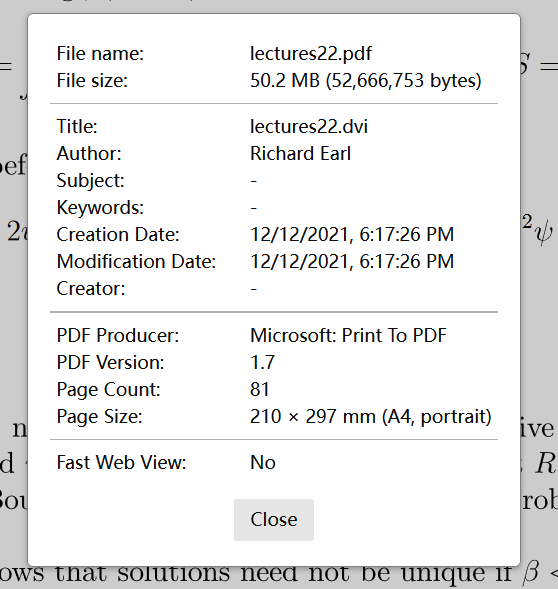|
I found document properties surprising: This is a 50.2MB file, but only 81 pages! PDF Producer: Microsoft: Print To PDF A file generated by 'Microsoft Print To PDF' can be 50 times larger than the original file.
Probably, the author produced the original PDF by pdfTeX, then added annotation (or correction...) using 'Microsoft Print To PDF'.
Also, the text isn't selectable (due to the format of embeded fonts?). From this answer:
... They are different. Saving as PDF yielded True Type fonts being embedded, whereas printing to PDF yielded True Type (CID) fonts. You can check in Properties and select the "Fonts" tab. 
|